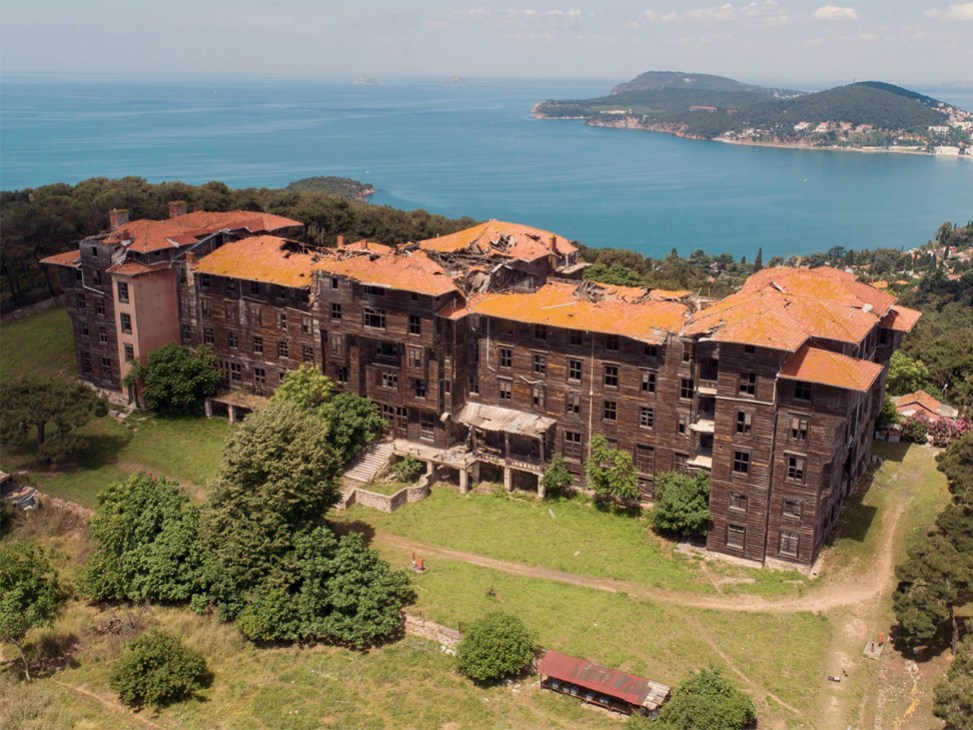Turning landmarks into hotels can offer a lifeline to heritage architecture
For about 60 years, Europe’s largest wooden building (and the second-largest in the world) served as an orphanage, providing a home to thousands of children. In the further six decades since it closed, however, it has lain empty and is slowly falling apart. Now the Greek orphanage on Büyükada, the largest of the Princes’ Islands just off the coast of Istanbul, is set to be converted into a hotel. The Ecumenical Patriarch of Constantinople, who owns the building, made the decision after years of trying to raise funds to restore it as a monument.
This raises a question: when historic buildings fall out of use and into disrepair, what is the best way to save them? Ideally, they would be preserved and then opened to the public. But that isn’t always possible. So is privatisation an acceptable alternative? The orphanage is one of the last surviving examples of the Princes’ Islands’ traditional architecture. Its new life as a hotel will preserve not only the building but also a style that’s on the brink of extinction.

The islands were originally home to members of Istanbul’s Greek (or “Rum”) community but since the 1950s there has been an influx of newcomers from across Anatolia and most of these intricately decorated wooden houses have not been properly looked after. On Büyükada, famous as the place where Leon Trotsky lived for three years in exile from Bolshevik Russia, many of the grand wooden mansions have been torn down and replaced by boxy modern apartment blocks – including Trotsky’s house. If conversion and privatisation help to save these buildings from concrete-loving developers, surely that is a better fate?
This is also relevant in Istanbul, a city where too many architectural marvels have been lost. The Haydarpaşa railway station, located on the Asian side of Istanbul, is a controversial landmark due to an ongoing debate over its future and potential redevelopment. Most of the building, which closed following a major fire in 2010, remains intact. Initially, there were plans to turn it into a hotel but they were abandoned as a result of local opposition. In 2015 the government announced that Haydarpaşa would be brought back into use as the terminal for a new high-speed train line connecting Istanbul and Ankara. That hasn’t happened. Today the terminal’s future remains uncertain.

The Peninsula Hotel, however, is a positive case study. Perched on the Bosphorus, it consists of two previously abandoned historic buildings and a faithfully reconstructed version of the old Bauhaus passenger ferry terminal. There is nothing to stop anyone from wandering in to take a look at its grand renaissance – and, judging by the crowds that often turn up without a booking for afternoon tea, it seems that people do just that.
While Istanbul has gone through a rocky period in recent years, there are green shoots of recovery: its tourism boom is reminiscent of the vibrant energy that the metropolis was so well known for in its heyday. Turning landmarks into hotels is a way to preserve architecture and create something productive. But the city should take heed from The Peninsula, a private development: no matter how exclusive a project, it should be built with the public in mind. A second life for the Haydarpaşa and the Greek orphanage on Büyükada should be part of that revival.
Hannah Lucinda Smith is Monocle’s Istanbul correspondent. For more opinion, analysis and insight, subscribe to Monocle today.



